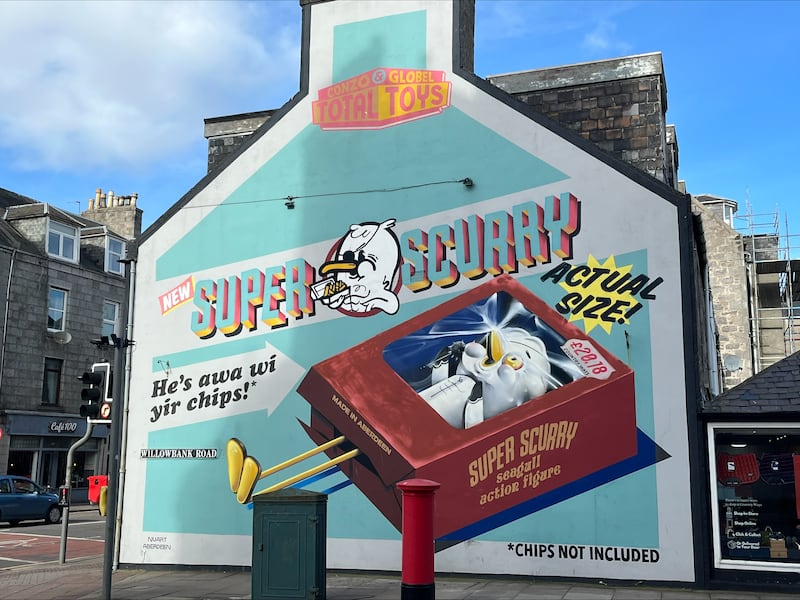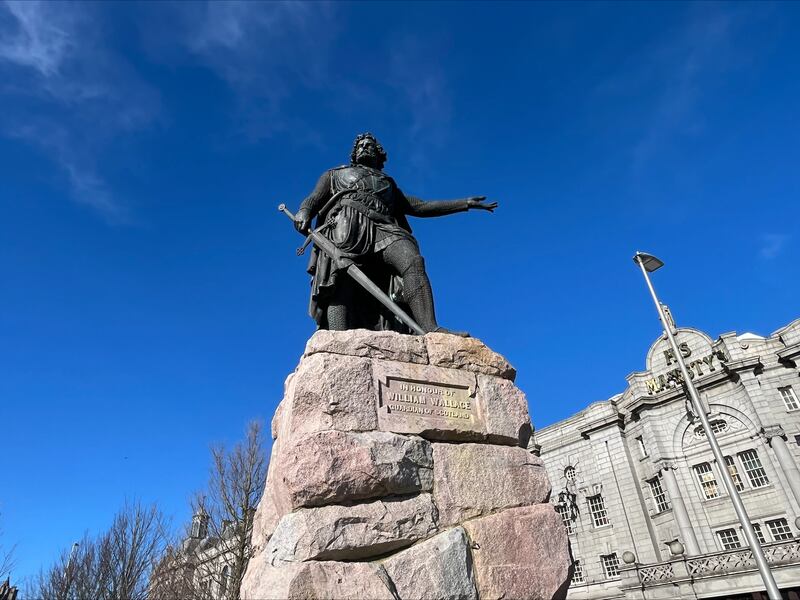Union Street in Aberdeen gently glistens when the sun shines. The broad, elegant road, named after the Act of Union with Ireland, bisects the city centre and is entirely lined with granite buildings. The stone sparkles when it catches the sunlight, giving a suitably bling sheen to the main thoroughfare of one of Britain’s wealthiest cities.
Towards the eastern end of the street lies the Mither Kirk – the mother church – of St Nicholas. Its pretty garden and graveyard, which were also bathed recently in the dappled light of a winter sun, contains the ancient resting places of many local noblemen and merchants. Their elaborate memorials suggest Aberdeen, through shipbuilding and quarrying, has long been affluent.
Inside, there is also a nod to the source of the city’s contemporary wealth. The church contains the Oil Chapel, the focal point of the chaplaincy of the North Sea oil and gas industry. As well as a site of remembrance for those lost while working at sea, it is also a place for thanks and praise. The industry has brought good times to Aberdeen over the past 50 years.
This is reflected in local salaries, higher here than almost anywhere else in Britain outside London. Workers on rigs off the coast are among the reputed high earners – last spring British media outlets ran stories about an Aberdeen job advertisement for an offshore oil rigger who could earn up to £100,000 (€117,000) per year with the freedom to “work whenever you want”.
READ MORE
But good times rarely last forever. Aberdeen is contemplating its future as the reality dawns of the pivot towards net zero carbon emissions, and what this might mean for the city that proudly calls itself the “oil capital of Europe”.

It has become a political football. Conservative UK prime minister Rishi Sunak visited Aberdeen two weeks ago to reiterate in person his backing for the industry. Under Boris Johnson, the UK government had planned to let oil operations dwindle to meet carbon targets. Sunak has done a screeching U-turn and promised instead to “max out” the North Sea fields. He backs issuing more drilling licences to give a fillip to Aberdeen’s most important industry.
Yet barely a week later, chancellor Jeremy Hunt this month extended a windfall tax on North Sea profits, pinching one of Labour’s flagship policies. Meanwhile, the Scottish National Party, which was frostier on environmental grounds towards the industry under former leader Nicola Sturgeon, has been more snug with it in recent months.
The SNP has been critical of Labour and the Tories’ windfall tax policies, while it has also softened its language on more licences. The shift has opened the SNP up to accusations of flip-flopping. Yet it may also be why the party has recently shown the flickerings of a nascent stabilisation in its political position, especially in the affluent northeast of Scotland around Aberdeen. Energy will be a big election battle line in Scotland.

A poll this month by Quantum Communications found 38 per cent of the Scottish electorate would vote SNP if there was a Westminster election tomorrow, up from 36 per cent in January. A previously-resurgent Labour dropped from 34 to 33 per cent. In the northeast, where the oil industry prevails, the SNP hit 47 per cent while Labour was down to 25 per cent.
“When people in the industry say the windfall tax will affect their investments, I’m inclined to believe them,” Richard Thomson, the local SNP MP for Gordon, just north of Aberdeen, told me recently. He said the Tories and Labour were in danger of getting oil industry taxation “badly wrong” and hitting jobs.
Thomson, elected in 2019 with a majority of under 1,000 votes, is unusual for an SNP MP in that his big challenge in the next election comes not from Labour, but from the Conservative party. His constituency becomes Gordon and Buchan at the next poll, losing suburban city sections but gaining more commuter areas to the north.
Despite his wafer-thin margin and the SNP’s national travails, Thomson is confident of holding on, and polls support his optimism. His party’s recent more pragmatic attitude towards the oil industry has done him no harm.
In the meantime, Aberdeen’s policymakers still plan for a future away from oil. Back on Union Street recently, the winter sunshine was also a boon for the small groups of tourists seen wandering around, snapping pictures of the statues of Robert the Bruce and William Wallace.

“Along with the food industry and life sciences, tourism will be a big part of Aberdeen’s economic future,” said Thomson. “Watching tourists recently with maps in Aberdeen city centre was like seeing salmon back in a river where they haven’t been in a long time.”


















